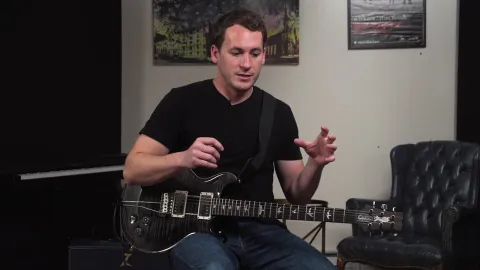Blues Guitar Tone

Blues tones can vary from very clean - a la B.B. King - to heavily distorted - a la Jimi Hendrix and everywhere in between. But, because of the vocal nature of blues, most players find somewhere in the middle to be most comfortable for lots of bends, slides, etc. We like our blues a little dirty!
This is accomplished in two basic ways:
- Natural Tube Amplifier Break Up (Old school and LOUD)
- An Overdrive / Distortion Pedal (New and very controllable)
Both of these options sound great, but most people do seem to favor the warm, natural breakup from an overdriven tube amplifier. It just rings out with harmonics and sounds huge. The only issue is that you have to really turn up loud to achieve that natural tube break up.
With that being said, there are some great pedals out there that replicate that sound at bedroom level, if you wish. This is especially fantastic for players who gig in many smaller sized rooms and wish to keep playing those rooms (and not get fired for blowing the place up).
Once you have found a good blues sound that has enough enough gain and sustain, you need to be able to vary between volumes for rhythm and lead sections of a tune. This is obviously most important for live playing. If you watch great blues players like Albert, B.B., Freddie, SRV, etc. you’ll notice that they maintain the same tone throughout the performance. They don’t have elaborate pedal boards and aren’t constantly changing sounds. One thing you do notice, however, is their phenomenal use of the VOLUME KNOB.
This practice is known as leaving “Headroom.”
The “headroom” live mentality essentially works like this:
- 10 is too loud, but reserve it for special moments
- 6.5 / 7ish should be perfect for rhythm guitar with the full band playing loud
- Rely heavily on your fingers for volume control, but know that you have some stank if you need it.
It is important to note that reducing the volume on your guitar will not only reduce the overall volume coming out of your amplifier, but wit will also reduce the amount of gain / saturation. Therefore, the biggest bends and the most searing leads will likely warrant the full monty.
Effects
A little reverb or delay works well with the blues vibe. If you have it totally “dry,” your bends and slides won’t shimmer and blossom as much in the mix. Likewise, if you have too much saturation you’re notes will have little definition and won’t smack the listener in the face (which is a good thing). Moral of the story: give yourself a little room to breathe - a little forgiveness - but don’t drown yourself out.
Now go on and get you a good Blues sound!